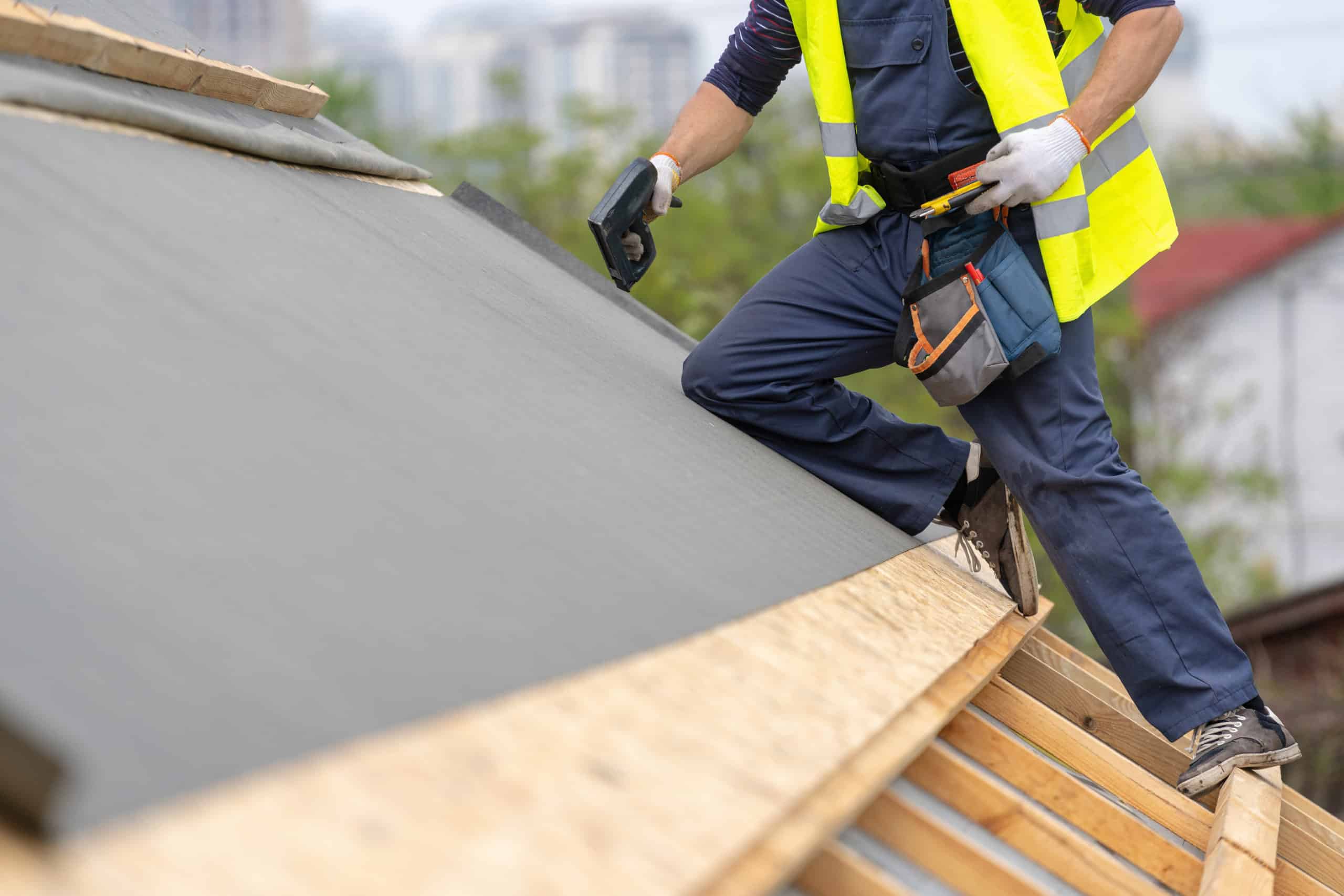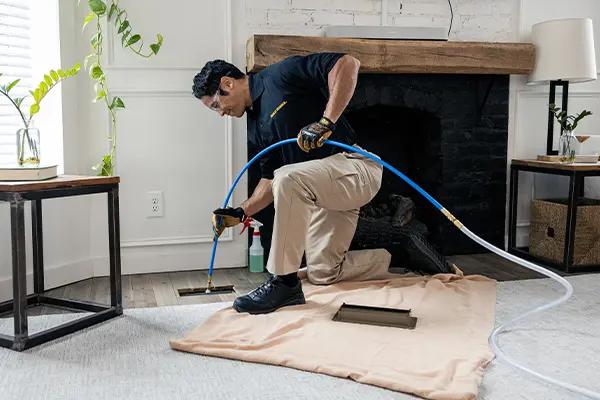The roof is the uppermost part of a building or home, protecting against rain, snow, sunlight, extremes of temperature and other weather conditions. Choosing the right roofing materials involves more than just cost and aesthetics, it requires an understanding of climate conditions and future maintenance needs. Contact Roofing Downingtown PA now!
There is a wide variety of roofing materials available for homes. Some are more durable than others. New options include plastic polymer blends that resemble wooden shakes and slate, perfect for older houses that need added durability.

There are a number of different roofing materials to choose from. The type that works best for your home depends on a few factors, such as the local climate and aesthetic preferences. Some of the most common options are asphalt shingles and metal roofs. These two types are also among the most cost-effective. There are also a number of other choices, such as wood shingle or shake roofs and stone tiles.
Rolled roofing is an inexpensive option that comes in rolls and can be rolled up or nailed down. It is best for low-slope or flat roofs. It is not recommended for a steeper slope because it does not allow water to flow down the roof easily. It is also susceptible to damage, as it does not expand and contract like a traditional shingle roof.
Built-up roofing, or BUR, is another popular choice for residential and commercial buildings with flat or low-slope roofs. It is comprised of multiple layers of roofing felt, asphalt, and mineral granules. This type of roof is often seen on the roofs of schools and hospitals.
Another type of roofing is a membrane roof. These are made of a variety of watertight materials, including Neoprene and PVC. They are durable and affordable and can last up to 35 years. Thermoplastic roof membranes are one of the fastest-growing types of roofing. They have a high temperature tolerance and come in a wide range of colors and styles.
Brick or concrete roofs are typically a more expensive option but are extremely durable. They can withstand high winds, salty air, and fires and may last up to 150 years. They are heavy, however, and can add significant weight to a structure, leading to issues.
Wood roofs, comprised of either shingles or shakes, offer a rustic and textured look for your home. They can be crafted from pine, red cedar, cypress, and other hardwoods and are available in a range of finishes. The difference between shingles and shakes is that shingles are milled into uniform length and thickness while shakes are split right from the tree, giving them a wedge-like shape.
The roof is an important part of a building, providing protection and insulation from weather elements. Roofing is the process of constructing or replacing a roof, and it involves several steps to ensure a quality result. Roofing contractors have the expertise and experience required to properly install a roof and protect the structure from moisture damage.
Before starting any work, the existing roof must be inspected thoroughly to identify problems and determine the best course of action. This will help the contractor determine the right type of materials and estimate costs. The contractor will also need to make sure the building is structurally sound and able to support the new roof.
The installation process starts with removing the existing shingles and flashing, which exposes the roof deck. The underlayment is then installed, and a cap nail is put down every four to six inches along the edges. The next row of underlayment is overlapped and nailed in the same way, with nails being closer together near the edge and further apart farther towards the center of the roof. Waterproofing is also applied to the valleys, where water often collects.
A roof must be inspected and maintained regularly to reduce the risk of weather-related damage. Regular inspections can catch small problems before they become major issues that cost thousands of dollars in repairs. A typical maintenance schedule includes annual roof cleanings and quarterly inspections to identify potential problems and repair them before they escalate.
These inspections should include a close examination of the shingles for excessive wear and tear, damaged or missing shingles and other signs of material decay. In addition, the flashing around chimneys and vent pipes should be inspected for signs of leaks. This can be done by looking for caulking that is lifting or peeling, or for rust on the metal. It is also a good idea to examine the condition of the gutters, fascia and soffit to ensure they are in good condition.
Finally, tree limbs should be trimmed periodically to prevent them from overhanging the roof. This is especially important during stormy weather when heavy limbs can break off and cause damage to the roof. Inspections should also be made of large accessories, such as the chimney to remove a soot-like material called creosote, and skylights and vent outlets to ensure they are free from water leaks.
If you’re in need of roof repairs, it’s a good idea to get professional help. These contractors can perform a variety of services, from replacing damaged shingles to repairing the flashing and tar paper. They can also seal up gaps and cracks to prevent water infiltration. In addition, they can replace any insulation that has become worn or tattered.
When determining whether or not it’s time to call in a roofing professional, the first thing that needs to be done is an inspection. This will include getting up into the attic, crawl space, or whatever else is needed to access the underside of your roof. This is where you’ll find evidence of water leaks, such as damp spots on the ceiling or walls.
The condition of your shingles will also need to be assessed. Are they torn, ripped, or missing altogether? If so, they’ll need to be replaced. However, if the shingles are still in relatively good shape, it might be more cost effective to simply repair them instead.
Before doing any actual repairs, it’s a good idea for a homeowner to have a few basic roofing tools. These should include a hammer, pry bar, and some sort of nail puller or shears. The preferred tool of most roofers, though, is a cat’s paw – a special device that can remove nails without damaging the shingle beneath. You’ll also want to have a dumpster close at hand, and some tarps to place over foundation plantings and shrubbery if necessary.
Another factor that can impact the price of a roof repair is the type of material that was originally used. Asphalt shingles are typically on the lower end of the cost spectrum, while metal and slate tiles are on the higher side. Finally, the pitch of your roof and its design can also affect labor costs.
Re-roofing is one of the most expensive ways to fix a roof, but it can also be the best way to restore an existing roof’s appearance. This is because re-roofing can be less invasive than a full replacement, since it only involves placing the new shingle overlay or roofing material on top of the existing shingles. However, it’s important to remember that re-roofing can also void or shorten the warranty on your new shingles.
A yearly inspection of your roof can also prevent costly repairs down the road. Check the chimney for a buildup of creosote, which can be removed with a brush and water-repellent products. Inspect the chimney’s mortar and bricks to make sure they are in good condition. Check the plumbing vent boots for cracks and tears in the rubber, as well as the metal base. If the base is rusting, it can allow water to seep into the house along the pipe.
The design of a roof can also help with uplift resistance. A hip roof style is more aerodynamic and is inherently more resistant to the uplift forces of high winds than a gable end wall. In addition, gable end walls can be braced to reduce their vulnerability. For existing homes, a wood adhesive with a caulking gun can be applied to the intersection of rafters and decking to increase the uplift resistance of the roof structure.
Other factors that can help with uplift resistance include the use of drip edges along the eaves. This is particularly important for older shingles, which can be more susceptible to wind uplift than newer shingles. For shingle roofs, using a six-nail pattern instead of the standard four-nail pattern can also increase the uplift resistance of a roof.
A well-designed ridge vent is another important feature of a windproof roof. This is especially true for houses around Lake Michigan, which are subject to severe storms and high winds. A ridge vent with the proper wind-resistance rating can help with uplift resistance and can also prevent water from penetrating into the attic.
Your roof is your home’s first line of defense against mother nature. From high winds and severe weather to the constant sun exposure, your roof takes a beating. It is important to choose a durable roofing option that can resist damage for years. Durable roofing materials are highly resistant to moisture, fire, wind, hail and rot. They are also easy to repair, which saves you time & money on repairs or replacements.



















